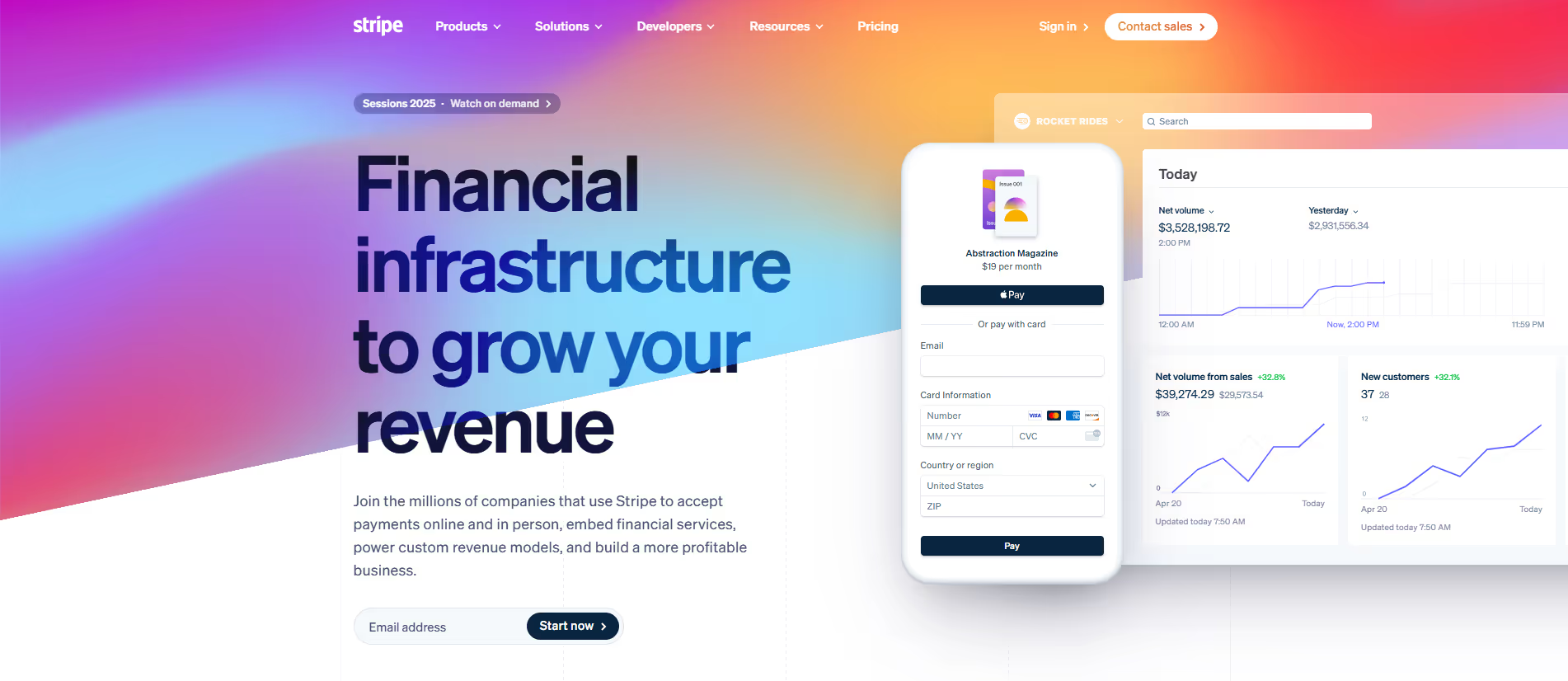Tool Insights
Home > Tools > Tool Details
Stripe
Description
Stripe is a suite of payment APIs and tools for online businesses to accept payments, manage subscriptions, and support global commerce efficiently.
Stripe provides a robust platform for businesses of all sizes to process payments online and in-person. It offers a highly developer-friendly API that allows for deep integration into various applications, websites, and platforms. Beyond core payment processing, Stripe includes tools for fraud prevention, subscription management, invoicing, global payouts, and financial reporting, making it a complete financial infrastructure for modern businesses. Its flexible architecture supports a wide range of payment methods and currencies, enabling businesses to scale internationally.
Key Applications
- Online Retail: Securely accepting credit card payments, digital wallets, and other payment methods for e-commerce stores.
- Subscription Services: Managing recurring billing, trials, upgrades, and downgrades for SaaS, membership sites, and streaming services.
- Marketplaces: Facilitating payments between buyers and sellers, handling complex payouts, and managing platform fees.
- Fintech Development: Building custom financial services and applications leveraging Stripe's powerful API and infrastructure.
- Global Expansion: Processing payments in multiple currencies and local payment methods across international markets.
Who It’s For
Stripe is ideal for developers, startups, e-commerce businesses, SaaS companies, and marketplaces seeking a flexible, scalable, and developer-friendly platform to manage online payments and financial operations. It caters to businesses that prioritize customizability and require a comprehensive suite of tools beyond basic payment processing.
Pros & Cons
How It Compares
- Versus PayPal: Stripe often offers more granular control and a developer-centric API for custom integrations, whereas PayPal is widely known for its ease of use with pre-built buttons and personal payment solutions, though it also has robust business offerings.
- Versus Square: Stripe is primarily focused on online payments and software integrations, while Square is highly recognized for its integrated hardware solutions (POS systems, card readers) for in-person transactions, though both offer solutions for both online and offline.
- Versus Adyen: Both Stripe and Adyen cater to larger enterprises and global payment solutions. Stripe is often praised for its developer experience and ease of getting started, while Adyen is known for its extensive global payment network and sophisticated risk management for very large-scale operations.
Bullet Point Features
- Developer-friendly API for deep integration and customization.
- Global payment processing supporting 135+ currencies and various local payment methods.
- Subscription and recurring billing management (Stripe Billing).
- Fraud prevention and machine learning-powered risk analysis (Stripe Radar).
- Invoicing and automated accounts receivable (Stripe Invoicing).
- Tools for marketplaces and platforms to manage payouts to sellers (Stripe Connect).
- Virtual and physical card issuance capabilities (Stripe Issuing).
Disclosure
All product names, logos and brands are property of their respective owners. Use is for educational and informational purposes only and does not imply endorsement. Links are to third-party sites not affiliated with Barndoor AI. Please see our Terms & Conditions for additional information.



.avif)




